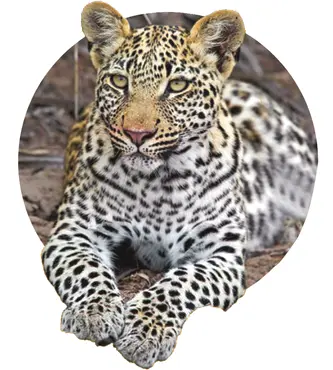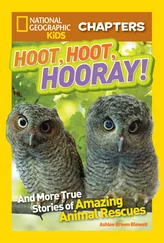Akhim rushed the baby cats to the local wildlife rescue center. It was run by the Wildlife Trust of India. It was not a moment too soon. The cubs hadn’t eaten in days. “One of them was seriously sick,” says Sonali Ghosh (sounds like so-NAH-lee GOUSH). Sonali is an officer with the Indian Forest Service. “I was scared it might die,” she said.
The rescue center veterinarians (sounds like vet-er-ih-NARE-ee-ens) examined the baby cats. “These are common leopards,” the vets decided. The common leopard is the kind most “commonly” seen. There are also snow leopards, clouded leopards, and Sunda clouded leopards.
Everyone at the rescue center treated the cubs with great care. Workers fed the kittens around the clock. They gave them goat’s milk, using baby bottles.
Leopards are meat-eaters. So the vets wanted the cubs to get a taste for meat. After about three weeks, the workers started mixing liver soup in with the goat’s milk.
The cubs ate a lot. They grew fast. As they got bigger, the markings on their coats became easier to see. One day the vets noticed something very interesting. The spots on these cubs looked different from the spots on common leopards. They were darker and grayer.
Did You Know?
As babies, clouded leopards have blue eyes. Later their eyes turn yellow.
The vets looked at each other. They wondered …
Could it be?
Yes! These cubs weren’t common leopards after all. They were clouded leopards. Extremely rare, almost never seen, clouded leopards!
Clouded leopards and common leopards are both big cats. But they are not the same kind, or species (sounds like SPEE-sheez), of cat. They are as different from each other as lions are from tigers.
COMMON LEOPARDS
• Live in forests, plains, deserts, and mountains in parts of Africa, Central Asia, India, and China.
• Roar loudly.
• Weigh up to 106 pounds (48 kg).
• Are covered with small, dark-colored, round spots.
• Have feet that always face front.

COMMON LEOPARD

CLOUDED LEOPARD
CLOUDED LEOPARDS
• Live in tropical forests in Southeast Asia and India.
• Purr and meow.
• Weigh up to 50 pounds (22.7 kg).
• Are covered with large spots that look like brown and gray clouds.
• Can turn their hind feet so they face backward.

The higher the better for clouded leopard cubs! They play, eat, and rest up in the treetops.
Clouded leopards are very shy. They spend a lot of their time high up in trees. They are rarely seen in the wild.
The fact that these rescued cubs were clouded leopards changed everything. If they had been common leopards, the vets would have had to send them to a zoo. It’s the law in India. That’s because hand-raised common leopards lose their fear of humans. They might attack people if they were set free.
But clouded leopards don’t bother humans. They hang out in treetops. Releasing hand-raised clouded leopards back into the wild would be OK. It would not put humans at risk.
But could these animals make it without their mother? Could they learn to protect themselves? Could they find their own food?
Bhaskar Choudhury (sounds like bas-CAR CHOW-durry) thought they could. So did Ian Robinson. Bhaskar is a veterinarian with the Wildlife Trust of India (WTI). Ian is the animal rescue director at the International Fund for Animal Welfare (IFAW). There was only one problem. IFAW had successfully released hand-raised elephants, bears, and even a tiger. But not a clouded leopard. No one had ever tried doing that.
The animal experts at WTI talked to the people at IFAW. They discussed what needed to be done. They talked about what could go wrong. Guess what? They decided to go for it! Everyone was super-excited to help save these rare animals.
Bhaskar and another vet, Panjit Basumatary (sounds like pan-JEET bo-SOM-uh-terry), went right to work. They put up a large cage out in the yard. They put blankets inside the cage for the cubs to sleep on. They also put branches inside it for the cubs to climb on.
Both of the cubs were males. The vets named one of them Runa (sounds like RU-nuh). They called the other cub Kata (sounds like co-TAH).
The cubs had a lot to learn. After a few weeks, the vets started feeding them small chunks of cooked meat. Ian liked the cubs’ reaction. “They would grab a piece of food and climb up in the branches to eat it,” he says. “Climbing was instinctive [sounds like in-STINK-tiv] for them.” In other words, they were born climbers.
The next step was getting them to eat their meat raw. That’s what leopards do in the wild. So the vets began tossing dead chickens into the cubs’ cage. Soon the cubs were eating plenty of raw meat.
In September 2009, Runa and Kata turned seven months old. They were big and healthy. They were eating well. It was time for them to learn clouded leopard ways. It was time to move them back to the jungle. But would the experiment work? Nobody knew.
Did You Know?
Clouded leopards have great night vision. In the dark they see six times better than humans.
Three men from Kokrajhar served as the cubs’ keepers in the forest. They lived in huts they built themselves. The huts were high above the ground. Each one was fitted between four trees. The huts had a bamboo floor, roof, and walls.
It was not easy work. Countless insects buzzed and whined all day and all night. They flew into the men’s eyes and bit their skin. Cobras and other deadly snakes hid under bushes.

Clouded leopards are so seldom seen that scientists know very little about them. Here’s what they do know:
1. Clouded leopards have very long tails, which help them balance on tree branches.
2. They use their hind feet to hang upside down from tree branches.
3. They eat birds, monkeys, pigs, small deer, and porcupines.
4. They ambush prey by leaping onto their backs and biting their necks.
5. They are good swimmers.
6. They are called “mint leopards” in China and “tree tigers” in Malaysia.
The keepers also faced danger from prowling tigers and charging elephants. That’s why they put their huts up high—to stay out of the animals’ reach.
For nine long months, the keepers lived like this. “These men were dedicated to these cubs,” says Ian. “And brave. This was a tough job.”
The keepers took turns, so that two men were on duty at the same time. The third would have the week off to return to the village for food and supplies.
Runa and Kata also slept in the treetops. They needed to be safe from tigers and elephants, too. Their keepers lashed bamboo poles together and built a platform high off the ground. They built a ladder the same way. Then they set a large green cage on top of the platform. The cage was made of metal and wire. It had a swinging door that locked. The keepers climbed up the ladder each night and locked the cubs inside.
Читать дальше
















